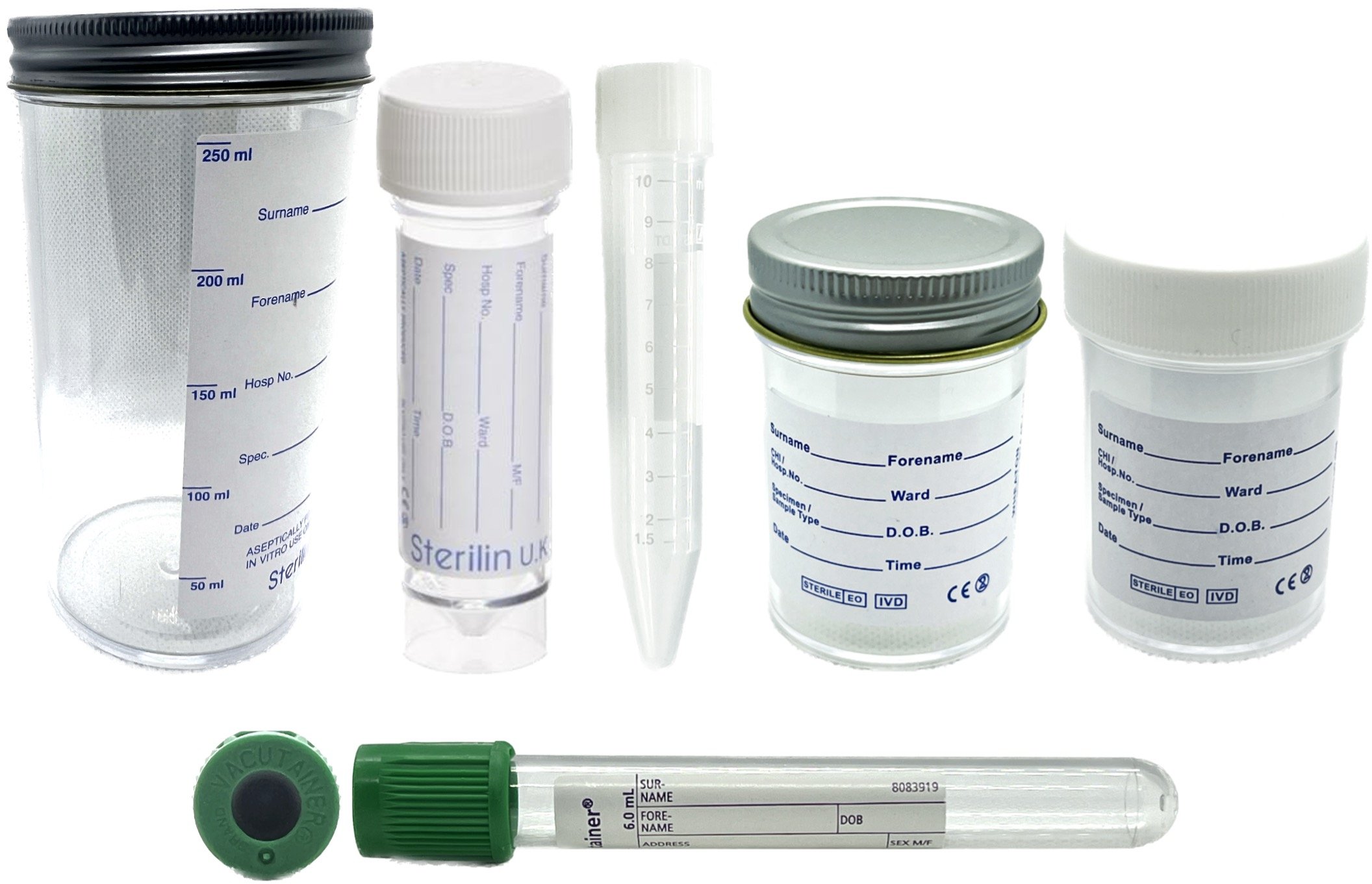Mycobacterium (Microscopy & Culture)
Alias: AAFB, TB, Mycobacteria tuberculosis
Discipline: Clinical Microbiology

Test information: The detection and isolation of Mycobacteria species from a variety of clinical samples.
Availability: Available locally Monday - Friday during routine hours: 08:45 - 17:15.
Turnaround Time: 24 hours (Microscopy)
6 Weeks (Culture)
Related Tests: QuantiFERON-TB Gold PLUS
- Specimen Type(s)
-
- Blood;
- Bone Marrow;
- Bronchial washings;
- Bronchoalveolar Lavage;
- Cerebrospinal fluid;
- Early Morning Urine;
- Lymph Nodes;
- Pericardial fluid;
- Pleural fluid;
- Post-Mortem Specimens;
- Respiratory Empyema Pus;
- Skin Swab;
- Sputum;
- Tissue;
- Tissue Biopsies;
- Other Acceptable Specimen Type(s)
- Gastric aspirates and faecal specimens are not routinely tested for mycobacterium - contact the laboratory before submitting specimens.
- Specimen Container - Adult
-
- Green Top BD;
- Sterile CE-marked Universal Container;
- Specimen Container - Paediatric
-
- Light Green Top Microtainer BD;
- Sterile CE-marked Universal Container;
- Analytes
-
- Microscopy & Culture;
- Mycobacterium species ;
- Part of a test profile?
- No
- Volume (min) of sample to be sent to laboratory
-
Sputum: >5mL
Urine: 200mL - Patient Preparation, Sample Handling and Transport
-
- For initial diagnosis of mycobacterial infection all specimens should be fresh and taken when possible before anti-tuberculous treatment is started.
- Sputum specimens should be less than 1 day old to minimise contamination. Two to three samples should be collected approximately 8-24 hours apart with at least one from early morning. Specimens collected on 3 consecutive days should not be pooled.
- Sputum should be expectorated from the lower respiratory tract by deep coughing. When the cough is dry, physiotherapy, postural drainage or inhalation of nebulised saline before expectoration may be helpful.
- Urine specimens should be collected separately in the early morning on three consecutive days in a 250mL CE-marked leak proof container (which does not contain boric acid).
- When collecting BAL/bronchial washings, avoid contaminating bronchoscope with tap water, which may contain environmental Mycobacterium species.
- For Mycobacterium avium disseminated infection please submit a blood sample in a lithium heparin tube on three consecutive days requesting MAI investigation.
- For blood and bone marrow, the skin should be disinfected at the venepuncture site and allowed to dry. Withdraw sufficient blood to fill a green top lithium heparin vacutainer blood tube. EDTA is inhibitory to Mycobacterium species, even in trace amounts.
- Skin/tissue biopsy/post-mortem specimens should be collected aseptically into a container without preservatives. The majority of organisms will be found in the periphery of a caseous lesion.
- Please mention contact with water from fish tanks, swimming pools and natural areas of fresh or salt water to ensure investigation for Mycobacterium marinum.
- Specimens should be transported to the laboratory without delay during normal working hours.
- Specimens other than blood should be stored at 2-8 °C if transport to the laboratory is delayed for more than 1hour.
- Maximum add on time
- N/A
- Units and Reference Ranges / Interpretation
- N/A
- UKAS number
- 8869
- UKAS accredited test?
- Yes
- Comments
-
Useful Links:
If you have any queries about a test or results interpretation please contact us.
Last updated: 01-06-2023